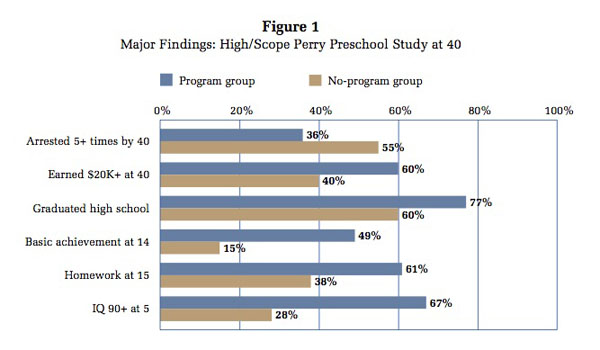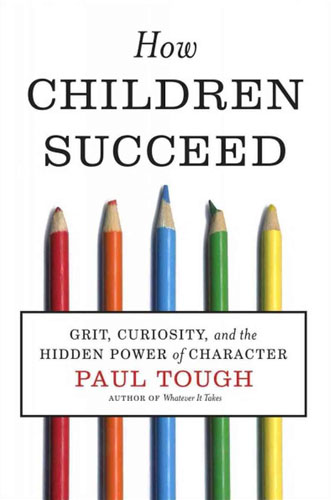The Return of the Inadequate Black Mother
Raymond Wolters, American Renaissance, November 21, 2014
Subscribe to future audio versions of AmRen articles here.
Richard E. Nisbett, Intelligence and How to Get It: Why Schools and Cultures Count, W. W. Norton, 2009, 282 pp.
Paul Tough, How Children Succeed: Grit, Curiosity, and the Hidden Power of Character, Houghton Mifflin Harcourt, 2012, 256 pp.
Americans have devised many theories to explain why so many black children get low scores on tests. The most straightforward explanation — racial differences in intelligence — has been banned from public consideration, so discrimination is the favorite explanation. However, there is another theory, which emerged half a century ago, was loftily dismissed as “blaming the victim,” but has quietly reappeared. It is the “inadequate mother thesis,” and is used to support revived interest in early intervention for “disadvantaged” groups.
In the early 1960s some reformers argued that young blacks, on average, did poorly in school and later on jobs because, with the breakdown of the black family, lower-class black mothers were not able to rear their children properly. These mothers were said to be sullen and authoritarian; they failed to provide enough affection to enable their offspring to develop a healthy sense of attachment. The vocabularies of black children in poverty were so limited and their homes so bereft of intellectual stimulation that when five-year-olds were tested for school readiness, 85 percent of blacks trailed behind the average white student. Young black students were said to be culturally deprived.
A backlash against this theory followed the publication in 1965 of Daniel P. Moynihan’s Report on the Negro Family, which warned that a black illegitimacy rate of 25 percent — then considered scandalously high — was a serious obstacle to black progress. Writers such as Frank Riessman, Herbert Kohl, Stephen Baratz and Joan Baratz scolded scholars who had embraced what they derided as a “social pathology model as a replacement for the genetic inferiority model.” For them, the inadequate mother thesis was a way to blame black victims rather than white racism. They rejected proposals to take the inner-city black child away from their parents in order to give the children enriching experiences during their first three years of life.
The publication of The Bell Curve in 1994 brought a new element to the debate. Those who refuse to countenance any discussion of race differences in intelligence hotly criticized the book, but they also acknowledged one of its main points: that youngsters who do well in school tend to do well in life, even if they have been reared in poverty. This led reformers to think that poverty could be abolished if the academic performance of poor children could be improved. This eventually gave rise to a major school reform movement.
Most modern reformers believe that important aptitudes are distributed equally among all large groups of people, and the complementary idea that if a large group is under-represented in an important activity this is due to discrimination or to the accidents of history, climate, geography, or culture. For school reformers, the culprits are bad schools and bad teachers. They say blacks will do as well as whites and Asians once the schools are properly reformed.
In recent decades, various approaches to reform have been tried in a number of school districts. There have been successes in individual instances — probably due to unrepresentative student samples — but the overall results of school reform have been disappointing. The racial achievement gaps are about the same as they were in 1954, when the Supreme Court ruled against school segregation in Brown v. Topeka Board of Education. At ages five and six, the average black student is behind 85 percent of whites on test scores, and the average Hispanic is behind 75 percent. These figures hardly change over the course of 12 more years of education.
This pattern convinced James Heckman, a Nobel prize-winning economist at the University of Chicago, that traditional methods of school reform came too late in a child’s life to make much difference. He concluded that “schools and school quality contribute little to the emergence of test-score gaps among children.” He therefore urged reformers to “catch ‘em young,” and focus on the pre-kindergarten years when children are three- and four-years-old, and even on children from birth to age three.
Prof. Heckman based this approach on studies of a few experimental enrichment programs for children in poverty who were followed until they were adults. The most influential of these programs was at the Perry Preschool in Ypsilanti, Michigan. From 1962 to 1967, Perry provided three-year-old poor black children with two and a half hours of daily preschool. Perry also placed teachers with advanced degrees in the children’s homes, where they spent 90 minutes each week instructing the Perry parents on child rearing. The Perry students were then compared with a control group at ages 14, 15, 19, 27, and 40.
The follow-up studies suggested that the children who attended Perry and whose parents received home visits were more likely to graduate from high school and less likely to go to jail. The Perry girls were less likely to become pregnant as teenagers, and the Perry boys earned more money than boys in the control group. After comparing the Perry students’ outcomes with those of the control group, Heckman calculated that the economic benefits of early childhood education yielded “rates of return are [from] 15% to 17%. The benefit-cost ratio is eight to one.”
Not everyone agreed. Only 123 students participated in the Perry study: 58 Perry students and 65 controls. If the experiences of even a few of these children were atypical, the overall results would have been skewed. And the differences between the Perry students and the control group were not large. Professor Bruce Fuller of the University of California, Berkeley, reported that “exposure to Perry explains less than 3 percent of all variation in earnings . . . and about 4 percent of the variability in school attainment levels.” By age 40, 36 percent of the Perry graduates had been arrested more than five times, compared with 55 percent of the control group. Richard E. Nisbett, a psychologist at the University of Michigan, has acknowledged that “a huge amount of research needs to be done to establish whether something like the Perry . . . program would be effective and feasible if scaled up to national proportions.”
Despite these reservations, two recent books have taken their cue from the Perry study. One is Intelligence and How to Get it (2009), by the same Professor Nisbett. In this book, he acknowledges that “many if not most experts on intelligence” are “hereditarians.” He concedes that a generation of studies of twins and adopted children have led many to conclude that between half and three-quarters of the ethnic and racial differences in IQ and academic achievement are due to heredity. Nevertheless, Prof. Nisbett insists that “the accumulated evidence of research, much of it quite recent, provides good reason for being far more optimistic about the possibilities of actually improving the intelligence of individuals [and] groups.”
Unlike earlier studies, which usually involved adoptees who moved from one middle-class family to another, Prof. Nisbett focuses on eight small studies that compared children in poverty who were adopted by well-to-do parents, with similar children who were not adopted. According to Prof. Nisbett, the IQs of the adopted children increased by an impressive 12 to 18 points. He claims that these studies demonstrate not just the importance of home environment but also suggest that preschool programs that simulate the child-rearing practices of upscale families could boost the intelligence of poor children. Prof. Nisbett insists that “genes account for none of the difference in IQ.” Instead, environmental factors, especially dysfunctional child rearing practices, “plausibly account for all of it.”
Prof. Nisbett also finds fault with the child-rearing practices of middle-class blacks. He writes that “Aspects of black culture — at every social-class level — are less likely to promote cognitive performance compared with white culture.” Prof. Nisbett recognizes that he is saying things that might “bring the wrath of people down on me. . . . I’m saying that working-class parents need to do some stuff differently. I’m saying black parents need to do some stuff differently.”
Prof. Nisbett expected to be criticized for resurrecting a social-pathology rationale that blames black parents for the shortcomings of black students, but there was no such criticism — at least not in the mainstream media. The New York Times published a laudatory précis of Intelligence and How to Get It, and Times columnists Jim Holt and Nicholas Kristof weighed in with special applause. (Critics with an appreciation for genetics pointed out that Prof. Nisbett’s studies showed performance improvements only during childhood, a period during which it is generally accepted that tested IQ can show substantial — but temporary — gains.)
Accounting for the scarcity of mainstream criticism of Prof. Nisbett’s views of black parents necessarily involves some speculation, but one possibility is that by 2009, when his book was published, so many academics were turning toward genetic explanations of racial differences that egalitarians were reluctant to criticize Porf. Nisbett at all. As Nicholas Kristof explained in the New York Times, it was better to attribute the academic gaps to bad child rearing than to inherent intelligence: “If intelligence were deeply encoded in our genes, that would lead to the depressing conclusion that neither schooling nor antipoverty programs can accomplish much.”
In another recent book, How Children Succeed (2012), journalist Paul Tough also emphasizes the importance of early childhood. Unlike Prof. Nisbett, however, Mr. Tough acknowledges that “pure IQ is stubbornly resistant to improvement after about age eight.” Yet Mr. Tough maintains that other aptitudes can be improved, “sometimes dramatically,” and he says recent research has established that they can compensate for deficiencies in intelligence. The most important teachable talent is grit — the persistence that Mattie exemplified in the novel and movie True Grit. (Mattie was looking for someone who would track down her father’s killers, someone who, like herself, would never give up.)
To support his emphasis on persistence, Mr. Tough cites recent research on GED students, that is to say, high-school dropouts who earn the equivalent of high-school diplomas. To the surprise of some teachers, people with GEDs have generally done as well on standard intelligence tests as high school graduates, but they do not do so well in later life. Mr. Tough speculates that the psychological traits that allow most high school students to graduate — persistence and the ability to delay gratification — are “valuable in college, in the workplace, and in life generally,” but that GED students lack them. According to James Heckman, “Inadvertently, the GED has become a test that separates bright but nonpersistent and undisciplined dropouts from other dropouts.”
Why do some students drop out while others persist with school work? According to Mr. Tough, the answer lies in infancy, when dropouts fail to develop a secure sense of attachment to their mothers. They are therefore more impulsive and less able to handle stress or manage strong emotions. For Mr. Tough, impulsiveness is the opposite of grit.
In an attempt to establish the importance of attachment, Mr. Tough discusses at some length the rat studies of McGill University Professor Michael Meaney. In his laboratory Prof. Meaney discovered that rat pups were traumatized when lab assistants handled them. When the pups were returned to their cages, some mothers scurried over to lick and groom them. These pups quickly calmed down, but other pups, whose mothers ignored them, remained agitated and anxious. And that was not all. Prof. Meaney’s team gave the pups a series of tests when they were fully mature, and the pups that had received a lot of maternal attention excelled on one test after another. They were healthier, more social, less aggressive, better at mazes, and lived longer. To be certain that nurture, not nature, accounted for the test results, Prof. Meaney’s team then switched the pups, giving the offspring of attentive mothers to indifferent mothers, and vice versa. Once again, the quality of maternal care made a big difference.
Mr. Tough suggests that something similar takes place in humans. “Some psychologists,” he writes, “believe that the closest parallel to licking and grooming in humans can be found in a phenomenon called attachment.” “Attachment theorists,” such as Mary Dozier of the University of Delaware, encourage parents to respond to infants’ cues more attentively and warmly. Angela Duckworth of the University of Pennsylvania agrees, and suggests that “attachment” leads to self-control and the ability to delay gratification.
For his piece de resistance in establishing the importance of persistence and grit, Mr. Tough discusses the case of an inner-city black girl named Kewauna. In her junior year of high school, Kewauna scored in the lowest one percentile on the ACT test, and after much coaching and repeated re-testing never scored higher than the 15th percentile. Yet Kewauna was determined to go to college. She sat in the first row of classes. She visited her teachers during office hours. She organized study groups with other students. Eventually she was admitted to Western Illinois University, where she earned a 3.8 grade-point average in her freshman year. Mr. Tough does not identify Kewauna’s courses. Nor does he mention affirmative action or grade inflation. But he celebrates her success as an indication that almost anyone can succeed in college if he develops “noncognitive” skills such as grit and persistence.
This may be true, but there are problems with Mr. Tough’s analysis. One is that despite his emphasis on recent research, Mr. Tough never touches on evolutionary psychology or mentions the genetic studies that Nicholas Wade discusses in his book, A Troublesome Inheritance (2014). Mr. Tough recognizes the importance of taming aggression and controlling impulsiveness, but does not acknowledge that recent genomic research has established that different races have different distributions of enzymes, hormones, and alleles that foster aggression and impulsiveness. He emphasizes the importance of planning for the future, but never mentions the possibility that populations that have had a long history of agriculture or commerce are likely to have genetic mutations that make them more future-oriented and orderly than populations that until recently survived by hunting and foraging.
Instead, Mr. Tough argues that black and Hispanic students are not developing “noncognitive skills” because their parents have not reared them properly. To remedy this, he recommends an approach that is back in favor with elite American philanthropists such as Bill Gates: early childhood education. He believes mothers of disadvantaged black infants and children should give them up for several hours of daily child care. A sarcastic Steve Sailer has said “out loud” what he suspects the early-childhood reformers are thinking to themselves: that poor black children should be taken “away from their crack-addict mothers and their moms’ knucklehead ex-con boyfriends and . . . raised by nice white ladies for as much of each 24 hours as possible.”
Despite favorable reviews in many newspapers and magazines, one doubts that this book will have much influence. The author’s professed intent is to reveal hard truths that must be acknowledged if blacks are ever to be uplifted, but many African Americans are likely to regard this book as a libel against black parents.
Meanwhile, race realists are likely to consider Mr. Tough’s book a pathetic excuse by a liberal writer who is not willing to face Darwinian reality. Better parenting would help, but genetics are still an important factor. C. Van Carter of the blog “Across Difficult Country,” has penned a droll comment: “Many blacks are [already] provided income and housing by the government. Supplying a staff of white servants to maintain the home and raise the children is the next logical step.”
Those who are savvy about the world of publishing will also recognize that when it comes to books about racial and ethnic achievement gaps, most commercial publishers do not want balanced accounts. They want inspiring books about disadvantaged youths overcoming the odds. They want stories about closing achievement gaps and leaving no group behind. They want books that will make readers less deterministic and more optimistic. Richard E. Nisbett and Paul Tough have filled this need.


















